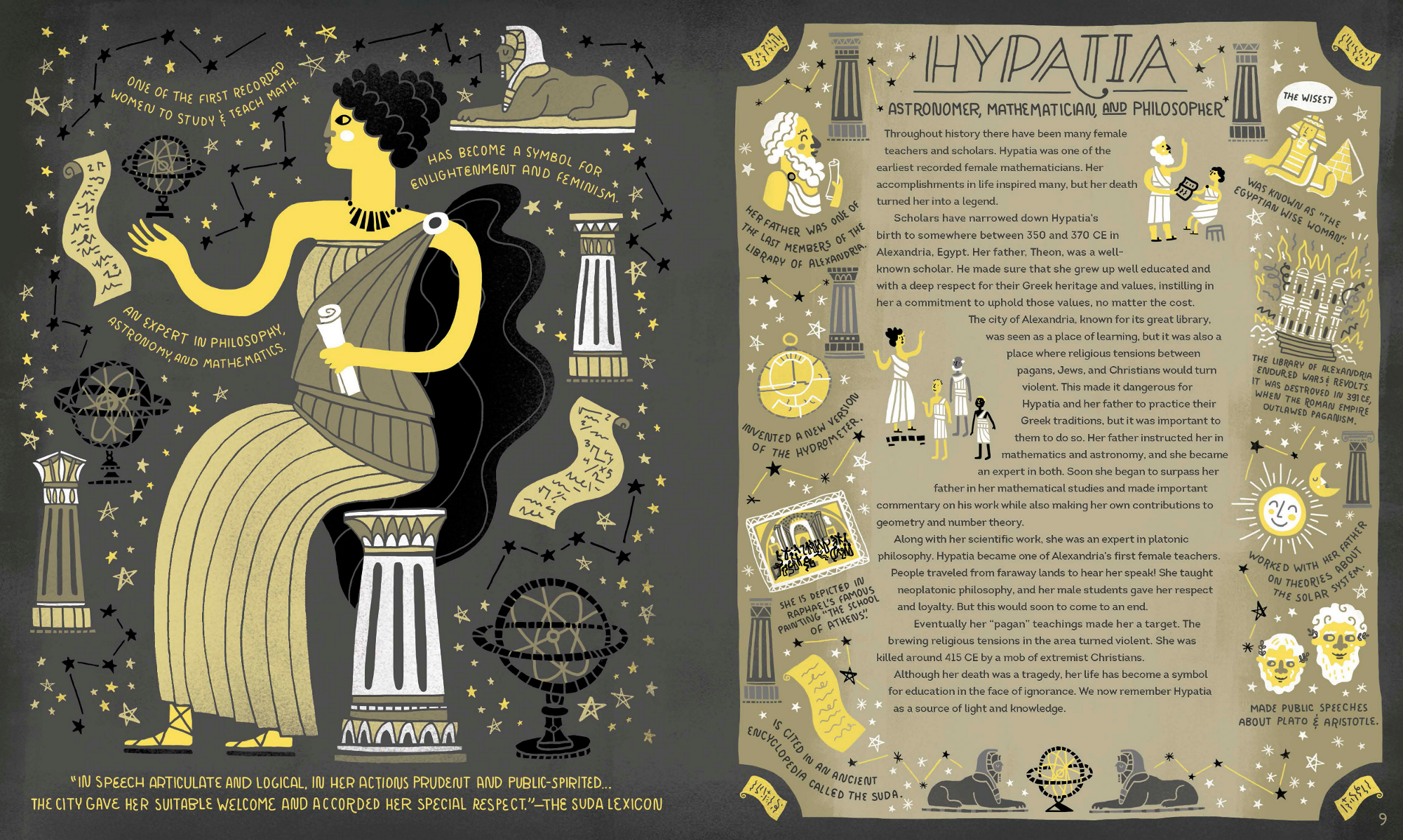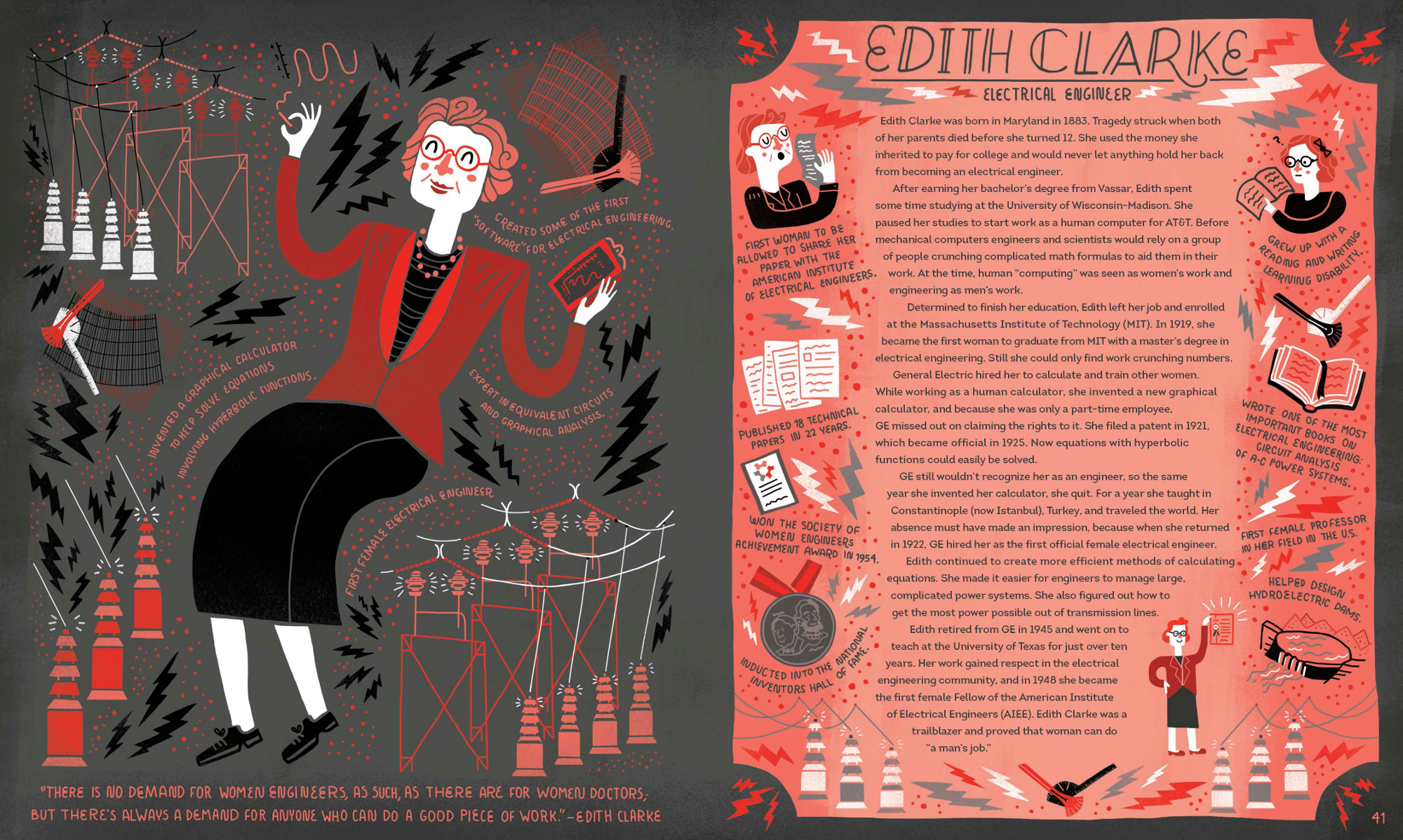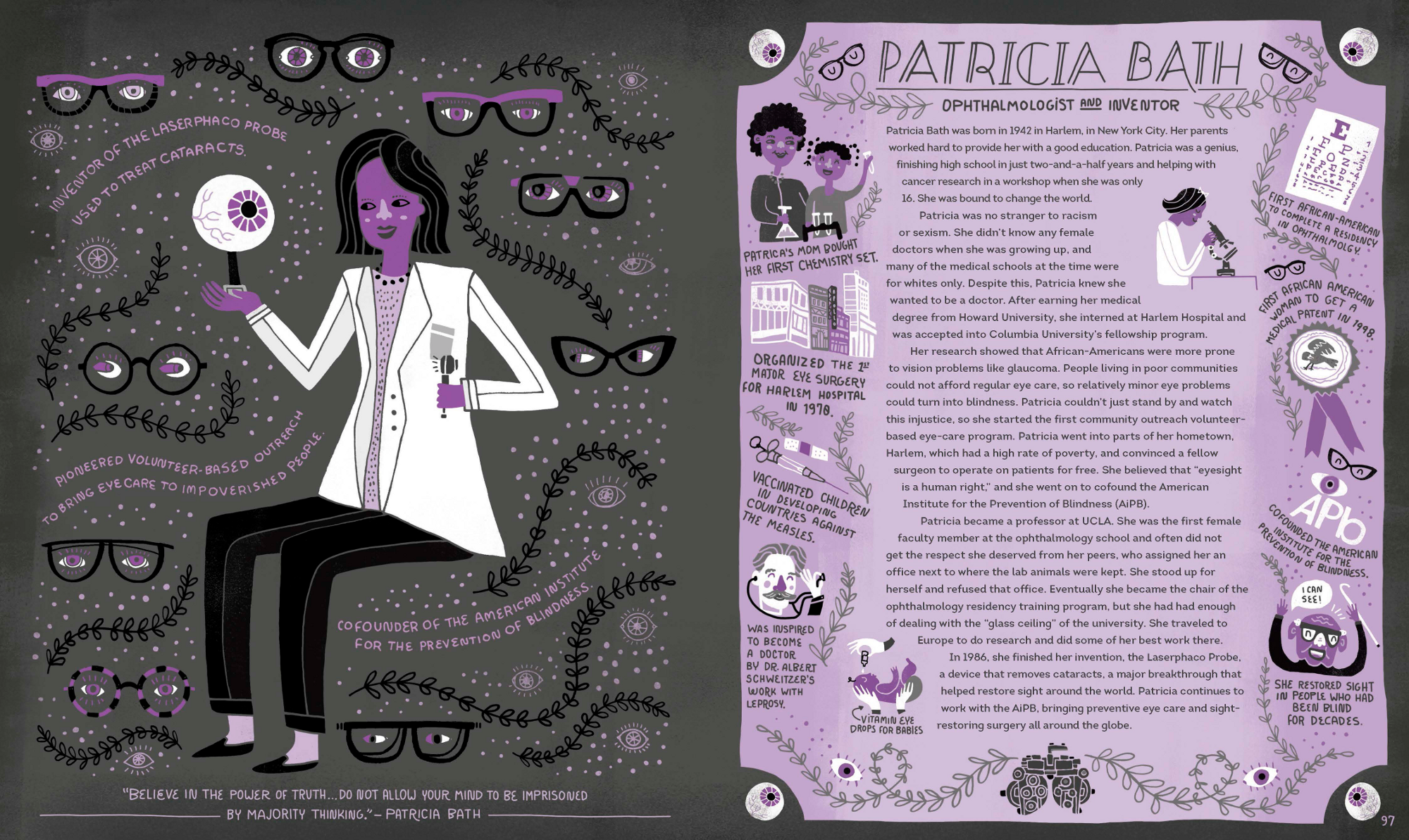Women in Science: An Illustrated Who’s Who
Illustrator Rachel Ignotofsky’s new book is a clever introduction to women scientists through history, starting with the ancient polymath Hypatia.

Reprinted with permission from "Women in Science." Copyright © 2016 by Rachel Ignotofsky. Published by Ten Speed Press, an imprint of Penguin Random House LLC
During a dinnertime discussion two years ago, illustrator Rachel Ignotofsky and her friend started chewing on the subject of what’s become a meaty conversation in America: women’s representation in STEM fields.
Ignotofsky, who lives in Kansas City, Missouri, lamented that kids don’t seem to hear much about women scientists. “I just kept saying over and over and over again that we’re not taught the stories of these women when we’re in school,” she recalls. Eventually, it dawned on her: “I was saying it enough that I was like, you know, I’m just talking a lot about this; I should draw some of the women in science that I feel really excited about.”
From Ignotofsky’s perspective, illustrations can be instrumental to learning. “As a kid, I always struggled with reading, and it was comic books, and books like Amelia’s Notebook that had all the illustrations in it, that really made me have fun reading,” she says, “so I wanted to create a science book like that.”
Scientific subjects are familiar terrain to Ignotofsky—her professional work includes whimsical depictions of the Arctic ecosystem, human cells, and tooth anatomy, for instance.
After first experimenting with a series of stand-alone illustrations of various woman scientists, which she successfully sold as posters, Ignotofsky knew she had the makings of a fully illustrated book. Women in Science: 50 Fearless Pioneers Who Changed the World features stylized portraits of female scientists from different nations and eras, accompanied by succinct biographies that cater to both kids and adults.
Science Friday caught up with Ignotofsky to chat about women scientists and her approach to the book.
Science Friday: Which women scientists did you admire growing up?
Rachel Ignotofsky: Jane Goodall was always one of my favorites, and I think most girls grow up with Marie Curie. And then, you get older, and you realize that there’s so many more women out there that you just hadn’t heard of. When I was doing this research, I was overwhelmed by the amount of women that we weren’t taught about in school who have contributed just as much, if not more, than the historic lineup of scientists that we always talk about, like Einstein and Tesla and Stephen Hawking.
How did you select the scientists whom you feature in the book?
I wanted a breadth of history, so I started in ancient Rome [the Byzantine Empire], with Hypatia [a Greek astronomer, mathematician, and philosopher] , and I went all the way to right now, with Maryam Mirzakhani, who’s the first female to win a Fields Medal in mathematics, and that happened in 2014.
And then I wanted a lot of different subjects. I could have had 50 women in chemistry if I wanted to, but I thought it was important to have, like, a volcanologist, and a marine biologist, and an astrophysicist—to show all the different fields, even social sciences.
Who is the intended audience?
Everyone’s the intended audience. But for me, I think the most important audience is middle school girls and boys, because that’s when you start identifying with your interests. I know that’s where it solidified for me with art. I take those middle schoolers very seriously.

Reprinted with permission from "Women in Science." Copyright © 2016 by Rachel Ignotofsky. Published by Ten Speed Press, an imprint of Penguin Random House LLC
In the subtitle of your book, you refer to these scientists as ‘fearless pioneers.’ Why do you describe them that way?
I think what’s fearless is that, despite being told ‘No’ in many different ways, whether it was having no access to college-level education; being told, ‘Oh, we don’t want your name on the publication because people won’t take it seriously’; or not being given funding, these women found a way to contribute so greatly to their science fields.
And I really mean ‘pioneer,’ because these women created access for other women, but they also changed the way that we study science in general. There’s Elizabeth Blackwell, who was the first female doctor in America. She basically created the first school for women to become doctors, and she also changed the way that we think about hygiene and the way that we think about women’s health. So not only did she pioneer a path for women to have access to education and be able to contribute to that field, but she also changed the way that we approach medicine.
Was there one scientist in particular whose story or research most intrigued you?
I think [Austria-born physicist] Lise Meitner’s, because of the amount of stuff that she had to go through to contribute. She started working at the chemistry institute in Berlin [part of the Kaiser Wilhelm Institute] when women weren’t officially allowed, so that meant that she wouldn’t get paid. [For a time] she did her research in the basement and wasn’t even allowed to use the labs or the bathrooms in the main building—she had to use the bathrooms at the restaurant across the street. That was just completely bonkers to me. [Meitner would later become the first woman in Germany to assume a full professorship, when she joined the University of Berlin in 1926 to head its nuclear physics program. ]
She worked with [chemist] Otto Hahn, and they were smashing neutrons against uranium, trying to create a new heavy element. But then Hitler came into power, and Lise was Jewish, so she needed to flee to Sweden for her life. But she didn’t want to leave her research, so she continued to write letters back to Otto Hahn; he had trouble understanding their experiment. From afar, she realized that they were creating fission, and they discovered nuclear energy. [Hahn won the Nobel Prize for the discovery.]
And I’m like, oh my—can you imagine, first, not being paid or even being allowed to be in the building, to then having to flee the Holocaust, and then you discover fission, despite all of that? It’s just nuts. It’s amazing. These women have changed our world.
When you went to illustrate these women, can you describe your approach—how you captured their likeness, what types of details you chose to include, and why?
Well, first I would do the research. I always start by reading about the subject and organizing information on the page, because the information’s the most important part about all of this. For the women, I would look up pictures of them, and I would lay out the page. It looks kind of like they’re each floating in a sea of information, and they’re discovering something. I wanted to create a really dynamic and interesting image.
For the fun facts [which appear as a border around the text], I picked out things that I thought were either really interesting, or really helped tell their story. I wanted to make sure that people would spend a lot of time on each page having fun, because I think having fun is the most important part when it comes to learning something. If you’re not having fun, I don’t think you retain the information.

Reprinted with permission from "Women in Science." Copyright © 2016 by Rachel Ignotofsky. Published by Ten Speed Press, an imprint of Penguin Random House LLC
What resources did you use for your research?
I used a lot of really good books that focused just as much on narrative as they did on the science, so Nobel Prize Women in Science—that was a really good one that I read. Same with Headstrong, by Rachel Swaby. The Nobel Prize website had a lot of great resources. And I used a lot of interviews with these women, and their interviews were amazing. You could really tell the love that they had for their work. There’s Gertrude Elion, who developed all these drugs for cancer treatment. In one interview, they asked her, ‘Looking back, what’s your favorite accomplishment?,’ and she’s like, ‘I don’t discriminate amongst my children.’ I was like, oh, the passion!
I think everyone should go and listen to Sau Lan Wu’s commencement speech at Vassar, where she talks about how she got to Vassar and how she eventually went to discover the Higgs boson particle [with a research team].
For Sylvia Earle, I watched the documentary called Mission Blue, where she talks about her entire life in marine biology and what she’s doing now. Hearing the stories behind the discoveries gets you really interested in science.
An argument could be made, I think, that media outlets and people who emphasize the ‘woman’ aspect of a woman scientist’s work contribute to the very sense of novelty that women scientists are trying to overcome. What are your thoughts on that?
If you focus on the fact that she’s a woman more than on her accomplishments, then that can diminish the fact that she accomplished so much. But we can’t ignore the fact that women throughout history have had different opportunities than men and have had to overcome so much, and that’s worth talking about, alongside the fact that they’ve accomplished so much. I think there’s a way of talking about it that doesn’t diminish their scientific accomplishment.
What do you hope readers take away from your book?
Each of these bios gives you an overview of the woman’s life, but I really hope that people want to go online and read more. Also, especially for young girls and boys, I just want them growing up thinking that learning about women in these fields is normal, that there’s nothing revolutionary about having a book all about women in science. I think that’s the best way to fight gender bias in general, is having stories of strong, powerful women be a part of the everyday consciousness, to make them household names. Once you change what you think is normal, then everything else follows suit.
This interview has been edited for space and clarity.
Julie Leibach is a freelance science journalist and the former managing editor of online content for Science Friday.